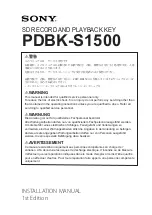
S1856 Tomahawk BX/A+
43
BIOS
Swap Floppy Drive
This field is effective only in systems with two floppy drives. Selecting
Enabled assigns physical drive B to logical drive A, and physical drive A to
logical drive B.
Boot Up Floppy Seek
When Enabled, the BIOS tests (seeks) floppy drives to determine whether they
have 40 or 80 tracks. Only 360-KB floppy drives have 40 tracks; drives with 720
KB, 1.2 MB, and 1.44 MB capacity all have 80 tracks. Because very few modern
PCs have 40-track floppy drives, we recommend that you set this field to
Disabled to save time.
Boot Up NumLock Status
Toggle between On or Off to control the state of the NumLock key when the
system boots. When toggled On, the numeric keypad generates numbers
instead of controlling cursor operations.
IDE HDD Block Mode
Enables multi-sector transfers from the IDE drive in PIO mode.
Gate A20 Option
Gate A20 refers to the way the system addresses memory above 1 MB (ex-
tended memory). When set to Fast, the system chipset controls Gate A20.
When set to Normal, a pin in the keyboard controller controls Gate A20.
Setting Gate A20 to Fast improves system speed, particularly with OS/2 and
Windows.
Memory Parity/ECC Check
Select Enabled or Disabled. If Enabled, allows memory checking when the
BIOS detects the presence of ECC or Parity DRAM.
Typematic Rate Setting
When Disabled, the following two items (Typematic Rate and Typematic
Delay) are irrelevant. Keystrokes repeat at a rate determined by the keyboard
controller in your system. When Enabled, you can select a typematic rate and
typematic delay.
Typematic Rate (Chars/Sec)
When the typematic rate setting is enabled, you can select a typematic rate
(the rate at which character repeats when you hold down a key) of 6, 8, 10,12,
15, 20, 24 or 30 characters per second.















































